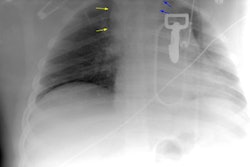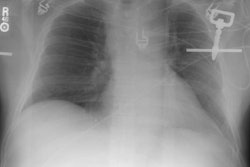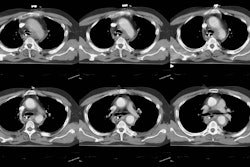Radiology 2001 Jul;220(1):47-53
Breast cancer: variables affecting sentinel lymph node visualization at
preoperative lymphoscintigraphy.
Birdwell RL, Smith KL, Betts BJ, Ikeda DM, Strauss HW, Jeffrey SS.
PURPOSE: To compare patients with visualized sentinel lymph nodes (SLNs) and
patients with nonvisualized SLNs, with a focus on variables affecting SLN
visualization at preoperative lymphoscintigraphy and on nodal drainage basins as
related to tumor location. MATERIALS AND METHODS: One hundred thirty-six
patients who had breast cancer underwent preoperative lymphoscintigraphy before
SLN biopsy. Patients with visualized and nonvisualized SLNs were compared for
age; tumor site, size, and histologic findings; injection guidance method;
diagnostic biopsy type; interval between biopsy and lymphoscintigraphy;
intraoperative identification method; and surgical identification rate.
Visualized SLN drainage basins were noted. RESULTS: Ninety-nine patients had
visualized and 37 had nonvisualized SLNs, without statistically significant
differences in tumor site, size, and histologic findings; injection guidance
method; diagnostic biopsy type; and interval between biopsy and
lymphoscintigraphy. Ninety-nine (73%) of the 136 SLNs were visualized at
lymphoscintigraphy; 30 (81%) of the 37 nonvisualized SLNS were identified at
surgery. Of the seven SLNs not identified at surgery, five were mapped with
radiocolloid only. Patients with nonvisualized SLNs were older than those with
visualized SLNs. Eleven (46%) of 24 tumors with internal mammary drainage were
in the outer part of the breast. CONCLUSION: Patients with and those without
visualization differed in age, SLN identification at surgery, and surgical
identification method. Nonvisualized status does not preclude axillary
metastasis. In older patients with nonvisualized SLNs, blue dye may aid in SLN
detection, as compared with isotope-only localization.



















